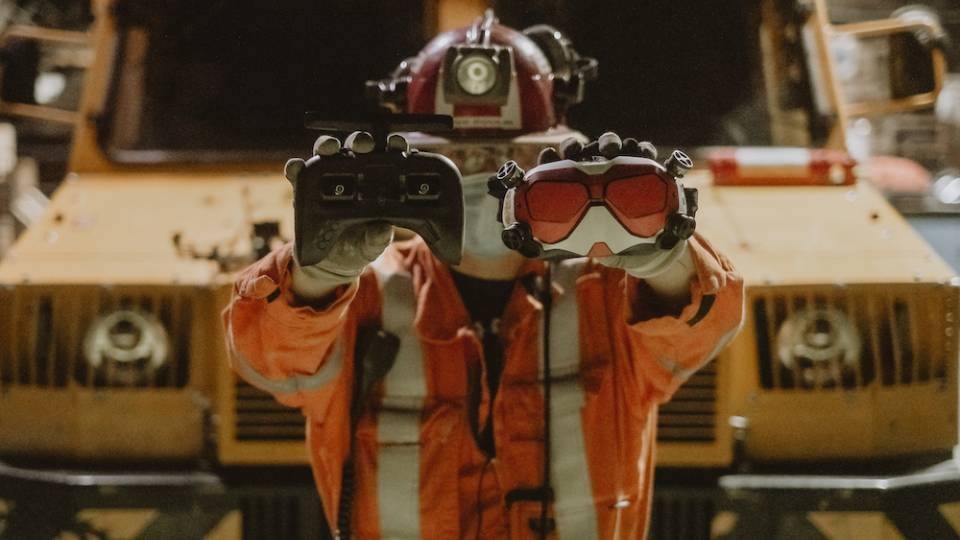It’s smaller than an average-sized dinner plate, but what the SafeScout Emergency Response Drone (ERD) lacks in girth it more than makes up for in ambition.
Launched in mid-September, SafeScout weighs a mere 950 grams (two pounds) and measures a diminutive 58 centimetres (22 inches) by 58 centimetres (22 inches) by 22 centimetres (eight inches).
Yet, its creator, the North Bay company SafeSight Exploration, is hopeful that this leading-edge technology will give mine rescue teams a much-needed advantage in their rescue and recovery efforts in underground mines.
“I’m not a mine rescue guy, but from my perspective, I think this – like the Jaws of Life for emergency response on surface or fire department – would be that kind of utility,” said Mike Campigotto, SafeSight’s founder and president.
“You don’t need it until you need it, but when you need it, you really need it. And so we’re hoping it’ll become a standard piece of equipment.”
Capable of carrying 700 grams (1.5 pounds) of payload, the drone is outfitted with high-definition video capabilities that work well in low light conditions.
Operating via a mine’s existing communications platform – Spektrum radio control, WiFi, LTE, or MicroHard – the SafeScout can fly 200 metres or, used in tandem with a repeater, 50 metres beyond line of sight.
Currently, the drone can fly continuously for 12 minutes on its rechargeable lithium polymer battery, but the company aims to bump that up to 20 minutes.
“The unit’s very small and light, so you basically throw all this stuff in a backpack, throw it over your shoulder and run to an emergency,” Campigotto said.
“You could swap out as many batteries as you have available to you to essentially create multiple flight incursions.”
Sign up for the Sudbury Mining Solutions biweekly newsletter here.
Since launching in 2016, SafeSight has introduced a number of industry innovations, all of which are designed to make the underground environment safer, while generating more accurate data that mines can use to make development and production more efficient.
They include the Rail Runner, a utility robot clamped onto a mechanized rail climber, which is sent up into a raise to do an inspection, and DeepTraxx, whose cute monster truck exterior belies a powerful machine geared toward investigating inhospitable areas that are inaccessible by drone.
SafeSight came up with the idea for its newest drone after developing its predecessor, a scouting unit that pre-inspects an area before operators send in a more sophisticated, and expensive, drone equipped with light detection and ranging (LiDAR) used for surveying and imaging.
After an underground incident, like a machine getting stuck or ground falling, the cheaper drone is sent in to scan the area for potential hazards. Once given the all-clear, operators then send in the LiDAR drone to complete the work.
Seeing the scout drone in operation sparked interest among emergency responders who recognized an opportunity to adapt its use to rescue and recovery.
“It had to demonstrate it could handle a range of situations to extend a rescuer’s capability to respond in different situations that today they couldn’t respond in,” Campigotto said.
“Then it had to basically demonstrate that it gave enough information for a rescuer to determine, ‘Am I rescuing an individual, or am I recovering?’”
Currently, it takes a pilot a few days of training to become proficient on the unit, and Campigotto suggests at least two people on a mine rescue team should be trained in its use.
SafeSight’s long-time mining collaborator, Newmont, has been a consistent and helpful partner in getting the drone to this stage, he noted.
Many mining companies are keen on the technology, but not willing to take a chance on a new entry to the market, favouring a “first to be second” approach, Campigotto said.
By contrast, Newmont has gladly embraced the opportunity to get in on the ground floor, providing testing space and feedback to help SafeSight in its work.
The gold miner challenged SafeSight to deploy the drone in four specific scenarios to determine how it would respond in each case. Those experiences in turn helped the company fine-tune the drone’s capabilities.
“Newmont has been very bold and supportive in working with us on a number of technologies that I think the whole industry will benefit from, and we’ve been lucky to have them as collaborators,” Campigotto said.
SafeSight Exploration demonstrates the capabilities of its SafeScout Emergency Response Drone during the 'Finding Wilson' scenario in the video below:
At least part of the hesitation by some potential clients is cost. But Campigotto’s team didn’t want affordability to be a barrier to adopting the technology.
So, for $7,000, plus a monthly subscription fee of $1,200, clients get the SafeScout, plus two practice drones, and the repeater so they can fly beyond line of sight. As the company upgrades the drone’s features and functions, clients will be shipped a new drone with all the latest enhancements.
“So, for a monthly fee, they’re essentially always flying the latest rescue technology that we have for underground,” he said.
“That really keeps it within their budget, makes it very affordable for big mines and small mines, and really gets the technology out there so that we can continuously improve it based on more feedback from more customers.”
Attendees at the 2021 International Mines Rescue Body Conference, held Sept. 7-8 as a virtual event, were some of the first to learn about SafeScout's capabilities.
Response to Campigotto’s presentation there has been positive, with mine rescue workers providing input into their wish list of future capabilities.
They include infrared technology and air detection capabilities, to sense gases and measure air quality, and Campigotto said those are next on the company’s to-do list. By the end of 2022, he predicted the SafeScout would be fully autonomous.




